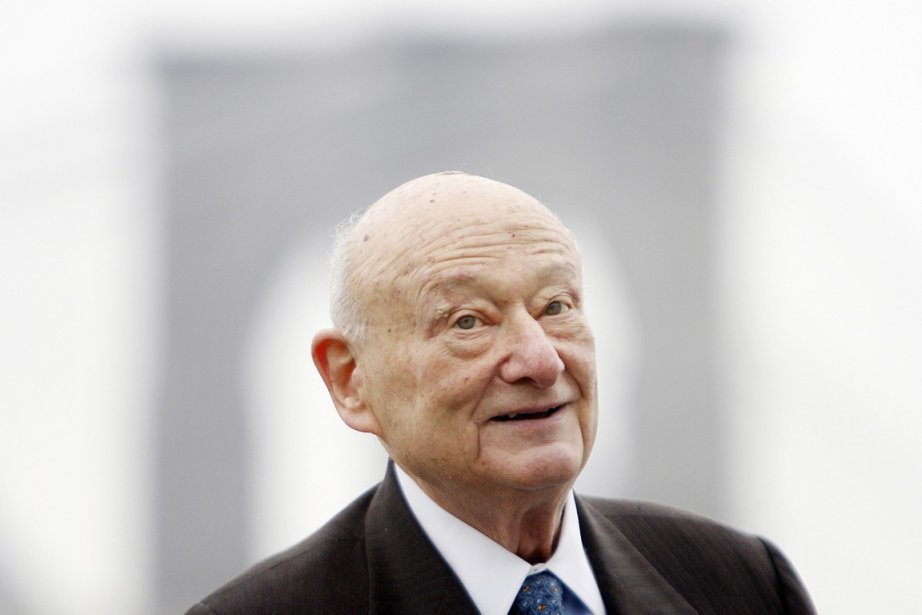
–
–
–
A tear traces a furrow on the dusty face of the young Jamaican immigrant who tells me about his homeless life in New York. We are in “Tent City”, the nickname given to a park on the Lower East Side – Tompkins Square – that looks like a slum.
Not far from us, two older men prepare their dose of heroin in broad daylight, passing the flame of a lighter under a spoon. From the sidewalk, passers-by can see them, but the two addicts do not hide, and take turns injecting the drug with the same syringe.
“Don’t you have $ 10 to give me?” I haven’t eaten anything since yesterday, ”the homeless youth told me, looking at his neighbors out of the corner of his eye.
The scene dates back to 1989, the year of my first stay in New York. It came to my mind last Friday, after the announcement of the death of Ed Koch, mayor of New York from January 1, 1978 to December 31, 1989. The media have described this colorful character not without reason as the perfect embodiment of his city – his outspokenness, fighting spirit and egotism would probably not have been tolerated elsewhere.
Homelessness, crack and racism
They also praised his successes. Ed Koch managed to pull New York out of a serious financial crisis in the late 1970s. He lifted the spirits of his city. He laid the groundwork for the rebirth of Times Square and several ravaged or deserted neighborhoods in the Bronx and Brooklyn.
But the memory I have of Ed Koch’s last year as mayor of New York is more of a nightmare. The Tompkins Square scene is just one example of an urban drift that seems unimaginable in the New York City of current mayor Michael Bloomberg, who continued what some call the city’s “disneyfication” started under his predecessor, Rudolph Giuliani.
In addition to the homeless problem, there were also those of crack and racism, two phenomena the consequences of which I have been able to observe closely. I lived in the East Harlem neighborhood at the time, at the intersection of 110th Street and Madison Avenue. The sidewalks of 110th Street, where there is a station of the line 6 of the New York subway, were then littered with small vials in which the dealers placed the “rocks”.
At night, on these same sidewalks, we also sometimes found the most recent victims of the murderous violence engendered by the crack trade. In 1989, New York would record 1,905 murders, nearly five times as many homicides as the record low of 414 reached last year.
Relentless record
The last day of Ed Koch at the town hall, Jimmy Breslin, legendary figure of New York journalism, drew up an implacable record in a column that clashes with the tributes of the last days: “There were 20,000 murders [à New York] since Ed Koch has been mayor. This is one of the most horrific data in the history of American cities and it clearly demonstrates that Koch was a hideous character, a man who laughed in the morgue. ”
Breslin also criticized Ed Koch for fueling racial tensions in New York, even going so far as to compare him to Lester Maddox, the openly segregationist former governor of Georgia.
On August 23, 1989, Yusuf Hawkins perhaps believed himself to be in the most racist country in the Deep South. That day, this unarmed black teenager was shot twice to the chest after being surrounded by a gang of white youth from Bensonhurst, an Italian-American neighborhood in Brooklyn. I had covered the fallout of this murder which was to harm Ed Koch in his quest for a fourth term as mayor and contribute to the victory of David Dinkins, his opponent in the Democratic primary. Dinkins would go on to become New York’s first black mayor.
False culprits
I also remember the trial of the “Central Park Five”, the nickname given to the five teenagers – four blacks and one Hispanic – accused of raping a young white jogger in the famous park one evening in April 1989. Mayor Koch them had called “monsters”, and real estate developer Donald Trump had bought full pages in local newspapers to demand a return of the death penalty to New York so that defendants “can serve as an example.”
After much fear and prejudice in the media, the “Central Park Five” were convicted on the basis of forced confessions. They all served sentences ranging from 5 to 13 years before the real culprit confessed in 2002.
I’m probably not the only one who doesn’t miss this New York.
– .
